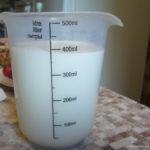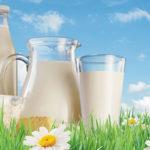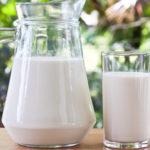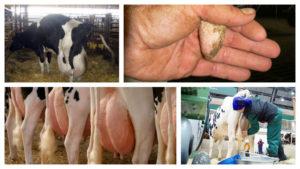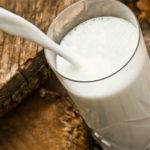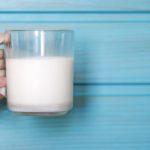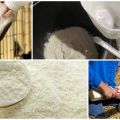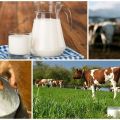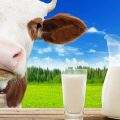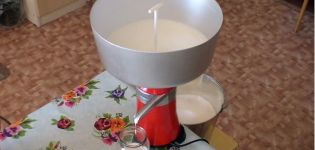Table of indicators of milk density in kg m3, what it depends on and how to increase
The density of whole milk is one of the most important quality parameters of this product. All substances are balanced in it in such a way that it is milk that for millennia has become a source of essential minerals, vitamins and a complex of easily digestible proteins for mankind. The density of milk determines the naturalness of the product and its nutritional value.
What is milk density and its rate
Density is the amount of milk (mass) at +20 ° C, equivalent to the amount of distilled water, with a temperature of + 4 ° C, with equal volumes of liquids.
Milk is a heterogeneous liquid consisting of various components, the product certainly contains:
- protein;
- milk fat;
- lactose;
- water;
- complex of mineral salts.
Increasing the content of protein, lactose and mineral salts in the liquid increases the density of the product. High fat content reduces the indicator. Skim milk will have a higher score. The specific gravity of whole raw milk is normal - 1.028. It is measured with a hydrometer. Values may fluctuate slightly.
| Milk product | Density kg / m3 |
| Whole | 1,0127-1,032 |
| Prefabricated | 1,028-1,030 |
| Fat free | 1,033-1,035 |
| Colostrum | 1,038-1,040 |
| Cream | 1,005-1,020 |
Adding 10% water to whole milk reduces the reading by approximately 3 kilograms per cubic centimeter. If the density is below 1.0127, there is water in the milk, an indicator of exactly 1.0127 is suspicious, 1.0128 - a quality product is analyzed.
Factors affecting density
It increases when water is added to milk and decreases if reverse is mixed with it. But, even with a conscientious owner, the indicators can change for a number of reasons;
- seasonal fluctuations in fat content;
- nutritional features of the livestock;
- breed of livestock;
- depends on the lactation period (in the first months after calving, the fat content of cow's milk is higher);
- animal health.
To bring the indicator to the average value, the collected milk is measured (from different cows, with a different percentage of fat content).
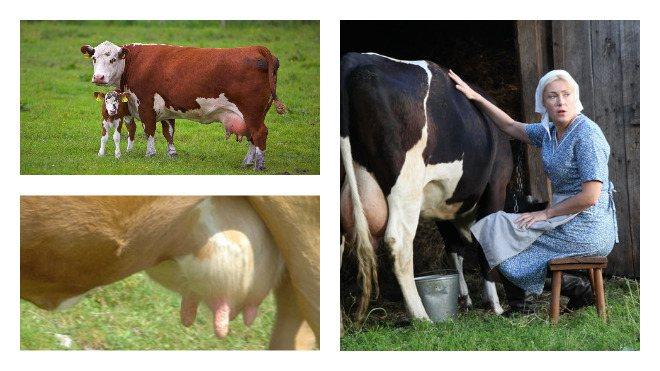
Is it possible to increase the indicators
They can be increased by observing the regime of keeping animals. Cows should be checked regularly by a veterinarian. It is necessary to ensure that the animals do not suffer from mastitis, diseases of the gastrointestinal tract. Observation of calving cows is mandatory.
The milk of sick animals is checked additionally; it is usually discarded and not sold or processed.
Pedigree stock is capable of producing a quality product. Dairy animals provide an increased amount of protein and minerals in milk compared to other types of cattle. Mineral supplements and vitamins are required to feed.Animals are provided with high-quality hay, vegetables, roughage to improve digestion in winter, and in summer they are grazed. Careful selection of pastures affects the quality of the product.
Regular cleaning of the barn, changing the bedding, processing of drinkers and feeders prevent the development of dangerous diseases in cows.
The complex of these measures allows you to increase the amount of protein, mineral salts, and hence the quality and density of the product.
Care must be taken to ensure that water does not enter the product when milking and storing food. Immediately after milking, the rate will be higher because the milk fat is still evenly distributed in the product. After storage, when it rises to the surface, the density will decrease.
Measurement methods
Large farms have equipped quality control laboratories. To measure the density, whole milk with a temperature of +20 ° C is poured into a measuring cylinder up to half, or 2/3 of the volume. A hydrometer is immersed in it. The indicator is recorded.
Important: for accuracy, at least 2 measurements are taken and the average value is calculated.
There are no laboratories on the personal backyard, the quality and density of milk are checked as follows:
- A few drops of milk are added to a container with water, if they are immersed in water, gradually dissolving, the product is of high quality, the milk into which water has got into, spreads with a film over the surface.
- Milk is mixed with alcohol in a 1: 2 ratio. A quality product will roll into flakes. In diluted milk with a low density, flakes do not form for a long time.
Simple methods allow you to determine the density and quality of milk. You can also find out when buying on the market or from an unknown manufacturer. This is one of the most important quality parameters of the product. It must be measured when sending milk for sale or further processing.
